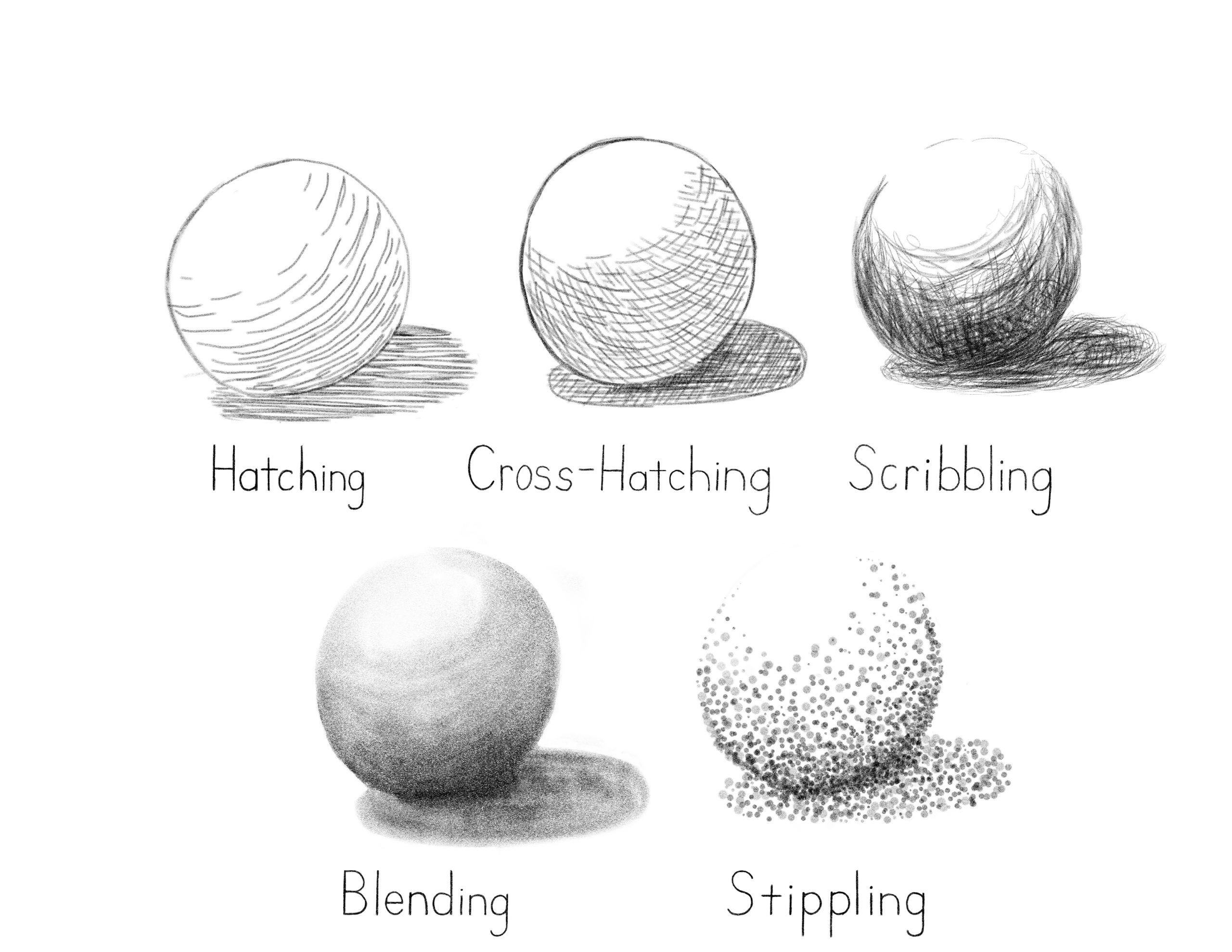Exercise 6.1 Shading of Spheres
For this exercise, you will be taking the basic round shape of a circle and transforming it into the three dimensional (3D) shape of a sphere. You will be creating five spheres, each with a different type of shading.
Materials needed:
- Pencils – 4H, HB, and solid graphite for stippling sphere
- Stump
- One quarter of your drawing pad
Time to complete: 20 minutes
Instructions:
Draw five spheres using the five shading techniques used in the image below.
- You will need to make the spheres a minimum of 2 inches (50mm) in diameter each.
- Start with a lightly drawn circle for all spheres, other than the stippling one. Use your 4H pencil and try to be as accurate as possible with its shape.
- Don’t forget about the shadow under the sphere. Without it, the sphere will appear suspended in space. The shadow under the sphere tells us that it’s anchored to the ground.
- Add shading for hatching, cross-hatching, and scribbling with a sharp HB pencil after the circle looks correct. You will want narrow uniform lines for these, so you may need to sharpen the pencil periodically.
- The blended sphere will first need to have material (graphite) built up using other shading techniques, such as hatching or scribbling. Be careful not to push hard. Try not to have any visible line in the finished sphere. Slowly build up material with your pencil to smudge with your stump. Your stump will blend what you leave on your paper, but will not do so on dark line embedded in your paper. You can go back and forth between your pencil and stump to build up darker shades.
- Stippling may work better with a dull solid graphite pencil with a round tip, so the dots are larger and more noticeable. You may need to experiment with what pencil and tip shape works best. The perimeter of the circle could start out as dots with no line. Try to build the shape of the circle with dots. If it doesn’t look correct, fix it with more dots until it looks round. Once it looks round, build up more dots to create the shading. If you need to use a perimeter line, try to make it only noticeable to you.


